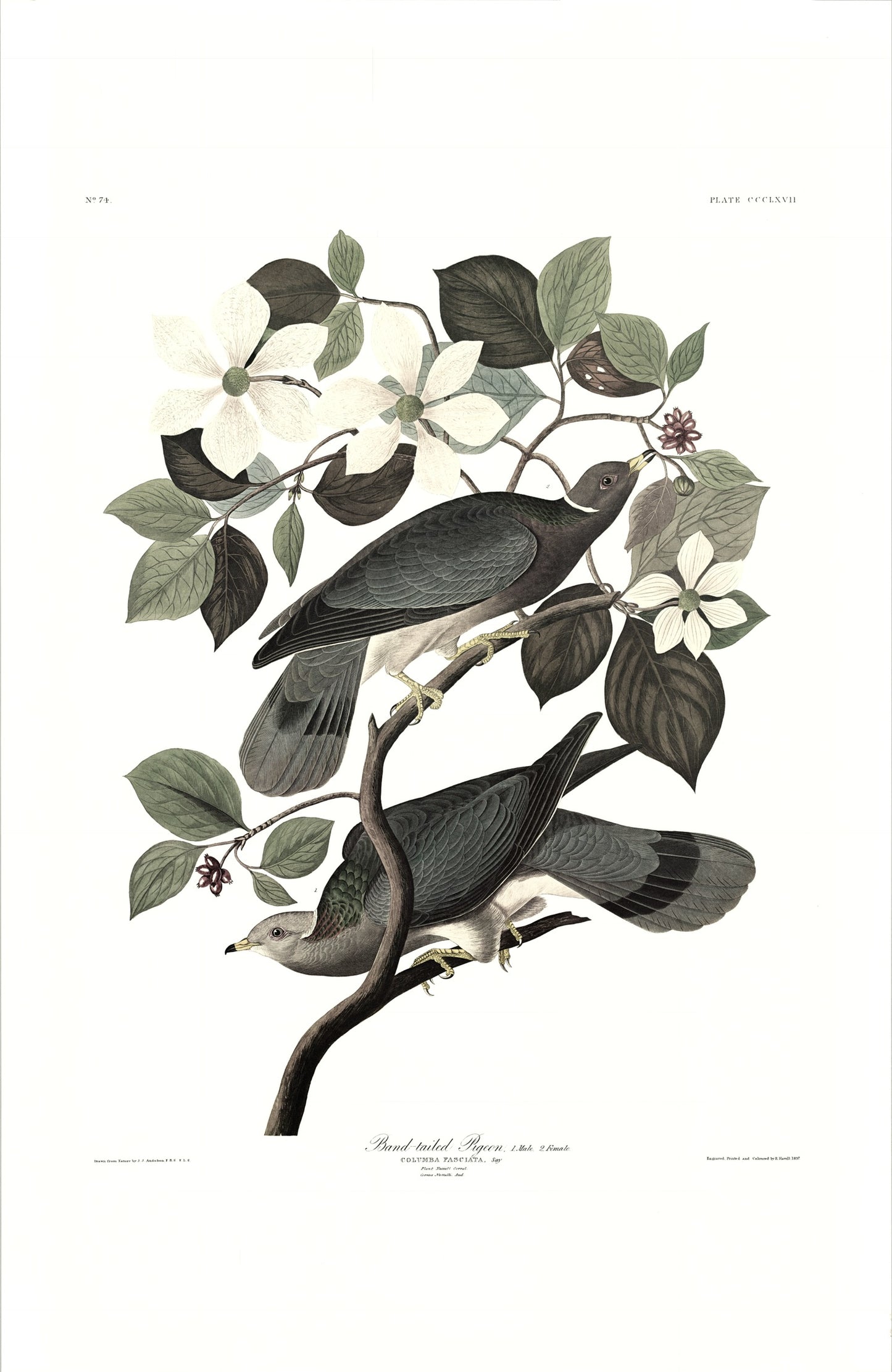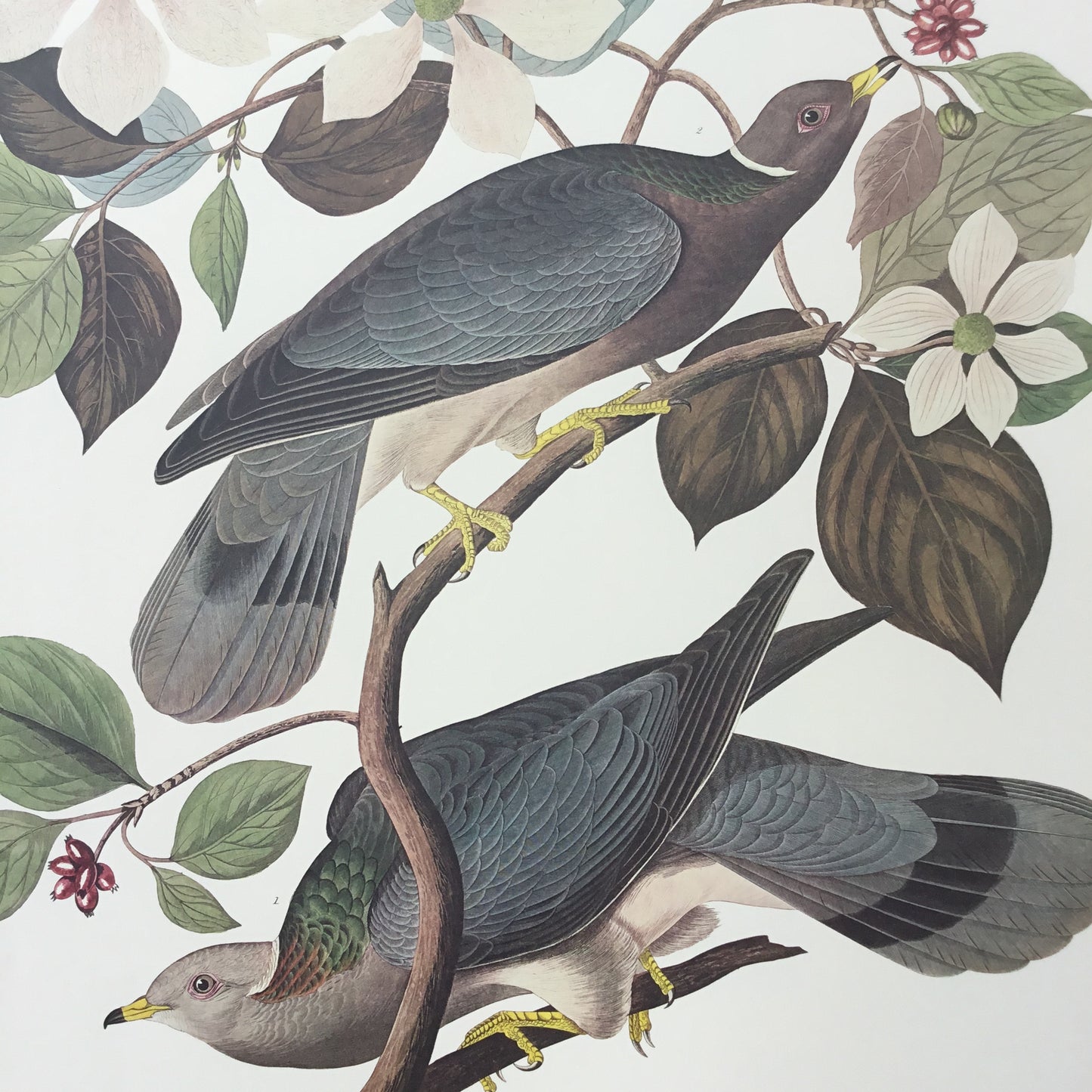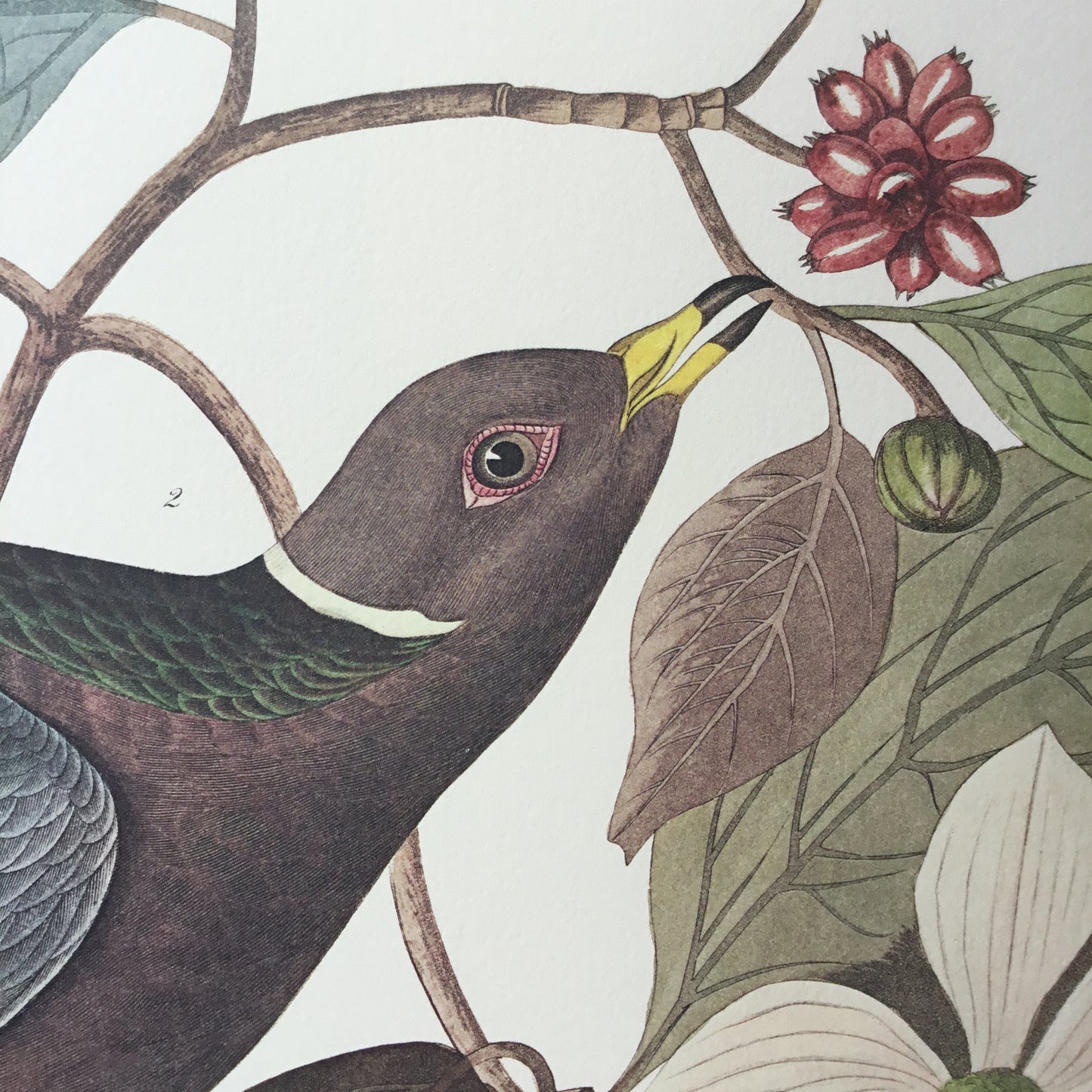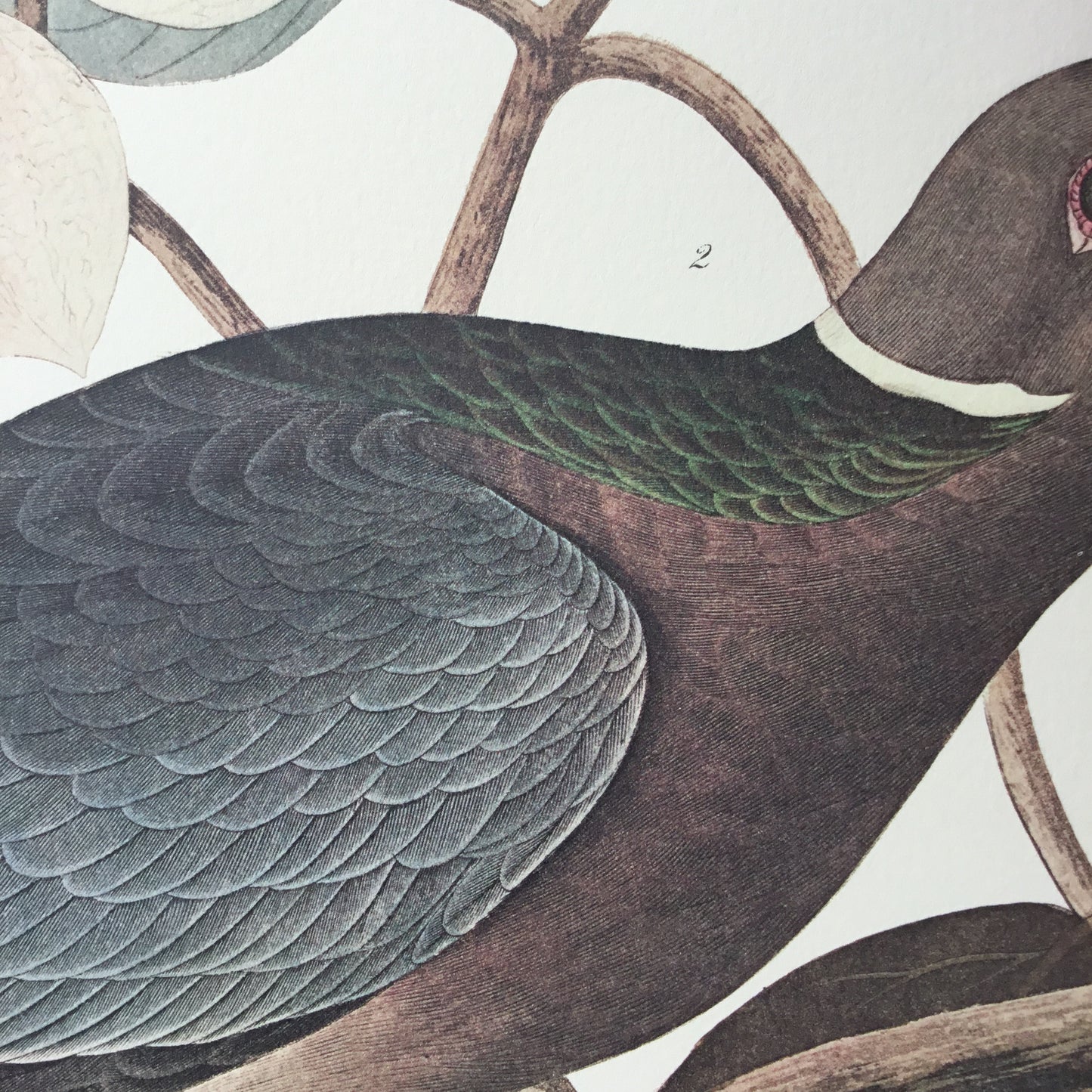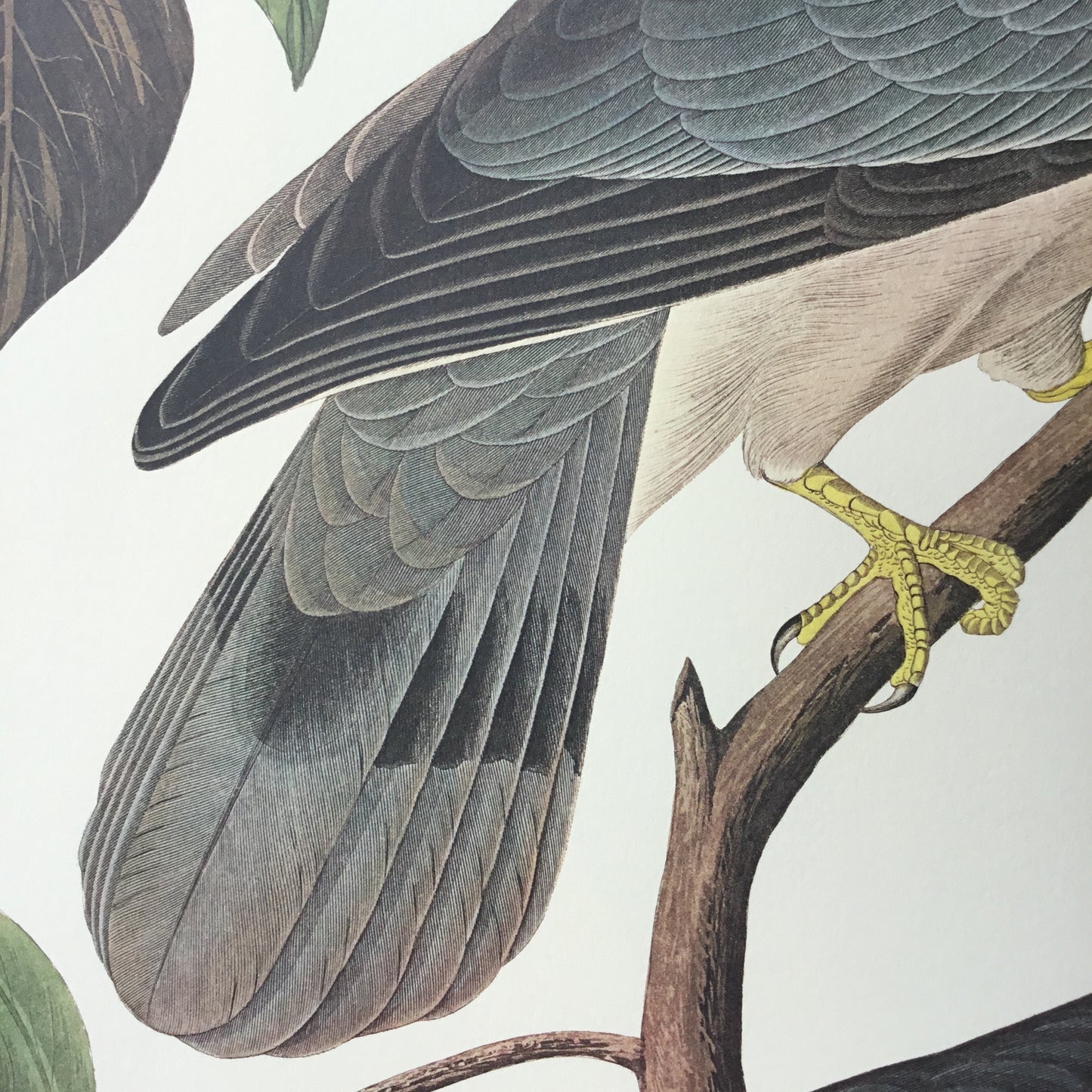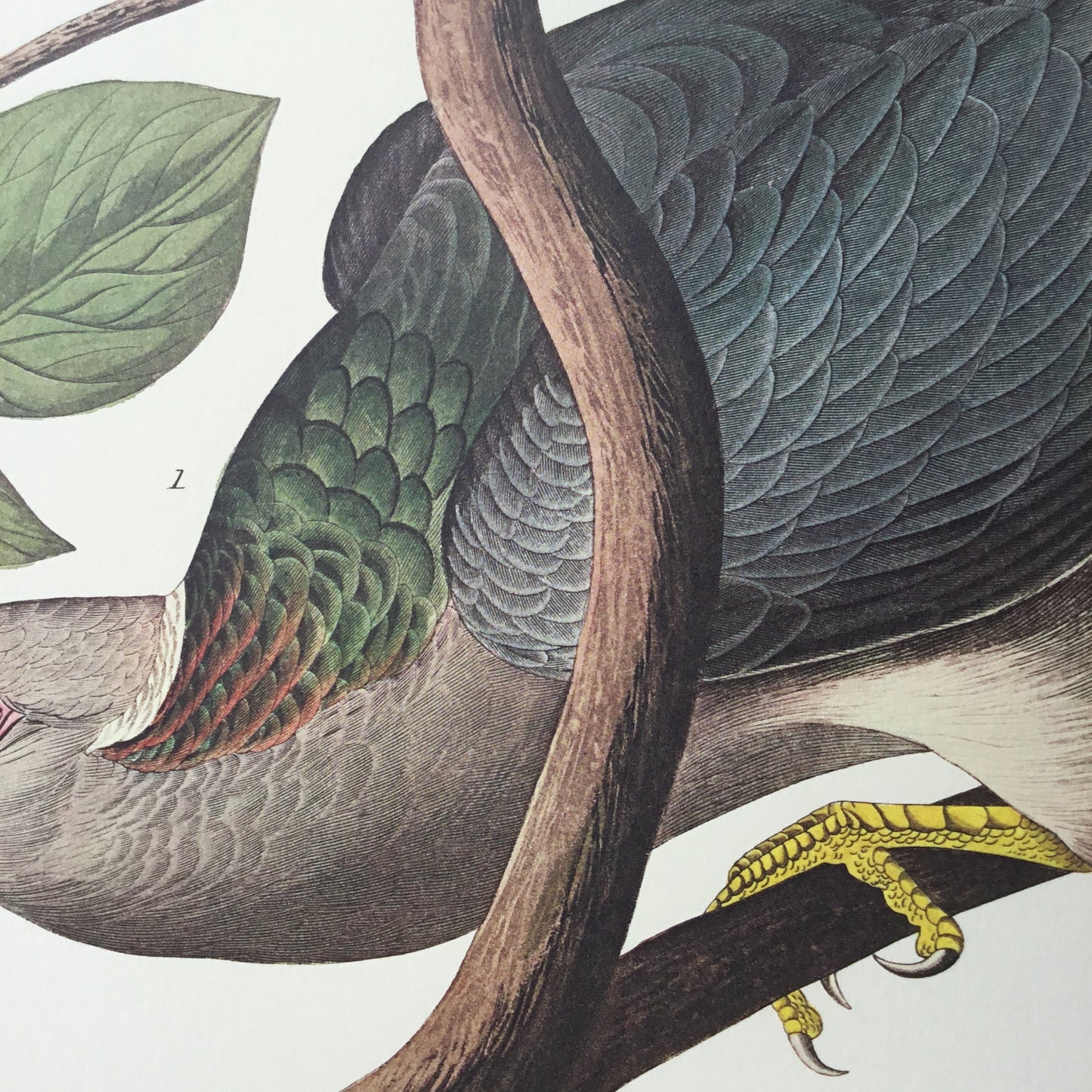Band-tailed Pigeon
Band-tailed Pigeon
John James Audubon’s Birds of America
Princeton Audubon Double Elephant Edition of 1500.
26 1/4 x 39 1/4; Condition: Mint
Nature is never out of style, so ... Feather your nest!
Thank you for visiting Princeton Audubon!
“Of all the full-size facsimiles of Audubon's prints, those from Princeton Audubon Ltd. come the closest in appearance and quality to the originals. Combining this with their very reasonable cost makes Princeton Audubon facsimiles winners for those looking to acquire some of the most dramatic American natural history images ever produced." - Chris Lane, Philadelphia Print Shop West, appraiser on Antiques Roadshow.
Of our prints, William Steiner, author of Audubon Prints: A Collector’s Guide To Every Edition wrote, “True prints, true colors, incredible detail. Princetons are simply the finest Audubon facsimiles ever made!”
We purchased the actual antique originals in order to accurately produce this award-winning edition, giving you a connection to Audubon’s original work. Read more ...
In order to create this spectacular print, we needed to purchase the actual original. Measuring more than two feet by three feet, the birds are the same size as in life.
Princetons began with the purchase of the actual originals which were physically used in the production process. A giant camera with film the same size as the print took a direct-capture picture of the original, and this exact image was transferred directly to the metal printing plates. There are no other Audubon facsimiles which match the quality of Princeton prints.
Our prints have this embossed seal at the lower right of the paper ...

... and are pencil-numbered in the lower left under the printed script.
Here are the printing specifications ...
Princeton Audubon Double Elephant Edition •Double elephant (life size - 26 1/4 x 39 1/4) •Limited edition of 1500. •Pencil-numbered and embossed with the Princeton Audubon Limited seal. •Up to 11 color plates used. •Specially developed fade-proof inks. Absolute color fidelity to the actual original. •Printed on a 300 line. •Very heavy archival paper which is recommended by the Library of Congress for archives and is specially toned to match the actual color of the antique originals. •Registered to purchaser. •As permanently displayed at The Royal Society of London, to which Audubon belonged as a Fellow.
About the image itself ...
This print is based on a composition probably painted in the winter of 1836-37 in Charleston, S.C. Maria Martin drew the dogwood branch, a drawing most interesting to botanists since the accompanying text in the Ornithological biography contains the first recorded description of the western, or mountain, dogwood, Cornus nuttalli, which has six involuted bracts instead of the four of the well-known eastern species.
Audubon wrote: "In my plate are represented two adult birds, placed on the branch of a superb species of dogwood, discovered by my learned friend, Thomas Nuttall, Esq., when on his march toward the shores of the Pacific Ocean, and which I have graced with his name."
These pigeons lay only one egg to the nest, and breed usually only once a year, the lowest reproductive rate of any North American game bird except the extinct passenger pigeon. The enactment in 1913 of the Federal law for the protection of the migratory birds saved this species.
Band-tailed Pigeon
John James Audubon’s Birds of America
Princeton Audubon Double Elephant Edition of 1500.
26 1/4 x 39 1/4; Condition: Mint
Nature is never out of style, so ... Feather your nest!
Thank you for visiting Princeton Audubon!
“Of all the full-size facsimiles of Audubon's prints, those from Princeton Audubon Ltd. come the closest in appearance and quality to the originals. Combining this with their very reasonable cost makes Princeton Audubon facsimiles winners for those looking to acquire some of the most dramatic American natural history images ever produced." - Chris Lane, Philadelphia Print Shop West, appraiser on Antiques Roadshow.
Of our prints, William Steiner, author of Audubon Prints: A Collector’s Guide To Every Edition wrote, “True prints, true colors, incredible detail. Princetons are simply the finest Audubon facsimiles ever made!”
We purchased the actual antique originals in order to accurately produce this award-winning edition, giving you a connection to Audubon’s original work. Read more ...
In order to create this spectacular print, we needed to purchase the actual original. Measuring more than two feet by three feet, the birds are the same size as in life.
Princetons began with the purchase of the actual originals which were physically used in the production process. A giant camera with film the same size as the print took a direct-capture picture of the original, and this exact image was transferred directly to the metal printing plates. There are no other Audubon facsimiles which match the quality of Princeton prints.
Our prints have this embossed seal at the lower right of the paper ...

... and are pencil-numbered in the lower left under the printed script.
Here are the printing specifications ...
Princeton Audubon Double Elephant Edition •Double elephant (life size - 26 1/4 x 39 1/4) •Limited edition of 1500. •Pencil-numbered and embossed with the Princeton Audubon Limited seal. •Up to 11 color plates used. •Specially developed fade-proof inks. Absolute color fidelity to the actual original. •Printed on a 300 line. •Very heavy archival paper which is recommended by the Library of Congress for archives and is specially toned to match the actual color of the antique originals. •Registered to purchaser. •As permanently displayed at The Royal Society of London, to which Audubon belonged as a Fellow.
About the image itself ...
This print is based on a composition probably painted in the winter of 1836-37 in Charleston, S.C. Maria Martin drew the dogwood branch, a drawing most interesting to botanists since the accompanying text in the Ornithological biography contains the first recorded description of the western, or mountain, dogwood, Cornus nuttalli, which has six involuted bracts instead of the four of the well-known eastern species.
Audubon wrote: "In my plate are represented two adult birds, placed on the branch of a superb species of dogwood, discovered by my learned friend, Thomas Nuttall, Esq., when on his march toward the shores of the Pacific Ocean, and which I have graced with his name."
These pigeons lay only one egg to the nest, and breed usually only once a year, the lowest reproductive rate of any North American game bird except the extinct passenger pigeon. The enactment in 1913 of the Federal law for the protection of the migratory birds saved this species.
